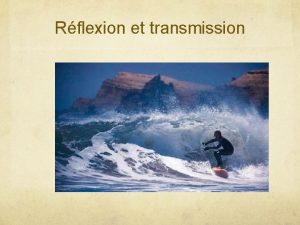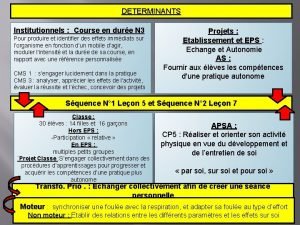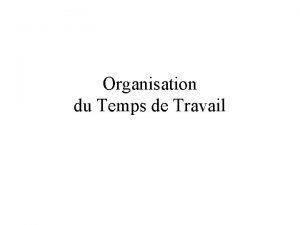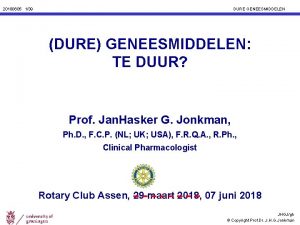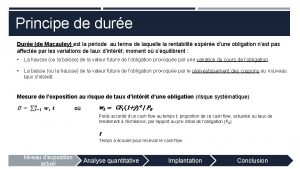Evidence of physical change and history Longue dure















- Slides: 15

Evidence of physical change and history Longue durée Evidence: radiocarbon dating tree rings pollen counts Fatepur Sikri ‘Victory Arch’ Environmental hypotheses: less dramatic climate change, river shifts, deforestation carry on environmental effects spiritual meaning tension btwn utility and sensuality

Documenting the antiquity of states Alexander the Great 325 BCE Ashoka 270 BCE

Religion and Culture – documenting and syncretism Hindu faith • links to Vedic teaching and oldest Dravidian culture upanishads (sitting in front of) 6 C BCE reformations • Jainism – based on upanishads concern for all living beings • Buddhism – teachings of Siddhartha Gautama • then: Zoroastrianism, Judaism, Christianity, Islam – everything

Sampradana • sampradana – giving/teaching; sampradaya – oral tradition • knowledge revealed through: shruti – manifestation of the divine in the world including texts revealed to early and later assembled as scriptures includes Vedas and Upanishads smirti – remembered or handed down; revealed but written down by human hand popular based on composition of epics from older oral traditions – shankara-acharyas or gurus includes the epics Mahabharata, Ramayana and the

Ramayama dharma Dasharatha 3 wives King of Ayodhya Kaikeyi (evil stepmother) Rama Sita obedient, brave, strong his loving and faithful wife he won her in a show of strength – ugh remains chaste; mother of two sons; set on fire and finally banished Ravanna demon; brother rules Lanka kidnaps lovely Sita Hanuman monkey god – bridge of monkeys to Lanka

Varnas (class) Purusha Rig Veda 10. 90 Mouth brahmins Arms kshatryas (warriors) Thighs (commoners) vaishya twice born _________________ once born Feet shudras (servants)

Becoming a caste society • evidence of varnas in Rigvega hymns c. 1000 BCE • dharmashatra ancestor commercial place clans placed describes birth groups or jatis →also exist clans that trace to common →sreni or guilds denote religious or group →janapadas denotes connections based on or community [literally where their feet]

Ashramas: stages of life only twice born ♂ need apply hmm, so sacred power not inherent in all … Student brahmacharya ♀ married Householder grihastha Forest dweller vanaprastha Renouncer sannyasa

Shiva, Chola period Tat tvam asi

Faith and Society in the Arabian Peninsula, and beyond Had been: • polytheistic • religious practice related to trade and commerce • reinforced a social/economic hierarchy anthropomorphic view • Islam an affront in each case ‘Seal of the prophets’ the Ka’aba • Islam as culmination and correction of Zoroastrianism, Judaism, Christianity • inheritor of both Jewish and Christian texts • Surrender, submission to the will of God

The Five Pillars of Islam 1. 2. 3. 4. 5. No god but Allah; Muhammad is His prophet Daily prayer Fasting during Ramadan Charity Pilgrimage to Mecca (Hajj) Jihad “struggle” • against vice • against ignorance of Islam “holy war” activity Islamic Law: sharia based on: Quran hadith logic ritual law related to all areas of human

The expansion of Islam, 632 -733 ce The Caliph • no clear to successor identified • Abu Bakr chosen to lead as Caliph • war against those who abandon faith Umayyad Dynasty (661 -750 CE) The Abbasid Dynasty (750 -1258 CE) jizya Dar al-Islam

Islam in south Asia • one of the largest Muslim populations of any modern state - 10 converts rather than immigrants → trade from southern coasts – evidence to antiquity culture and belief by 13 C CE dominated by Muslim traders from western Asia → for 7 C, the religion of the ruling political elite This significant minority cannot be understood easily in

Gupta State • • commerce Rajadharma Chakravartin army of 600 000

 Réflexion dure et molle
Réflexion dure et molle 1.4 más vale paso que dure y no trote que canse
1.4 más vale paso que dure y no trote que canse Compter sur lui d'heure en heure tant que dure le combat
Compter sur lui d'heure en heure tant que dure le combat Dure vie
Dure vie En dure
En dure The history of life section 1 fossil evidence of change
The history of life section 1 fossil evidence of change Chemical changes examples
Chemical changes examples Differences between chemical and physical changes
Differences between chemical and physical changes What is example of physical change
What is example of physical change Whats a chemical change
Whats a chemical change Is mashing potatoes a physical or chemical change
Is mashing potatoes a physical or chemical change Spare change physical versus chemical change
Spare change physical versus chemical change When does a physical change occur study jams
When does a physical change occur study jams Which is an example of a physical change
Which is an example of a physical change Chopping wood is a physical or chemical change
Chopping wood is a physical or chemical change Une longue histoire de la matière
Une longue histoire de la matière
